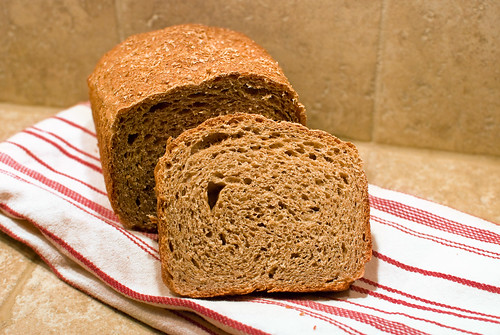
(probably my worst crumb shot ever - most humble apologies)
I'm ALMOST DONE baking my way through Peter Reinhart's award winning book, The Bread Baker's Apprentice, along with a number of other amateur bakers (I'm not sure how many are still with us. Many have finished - and some are just starting). Want to learn more about it? Check out the following links:
- Pinch My Salt BBA Challenge page—master resource for the challenge
- Buy the Book Bread Baker's Apprentice by Peter Reinhart
- List of Breads See what's coming up.
- Blogroll See who's baking. Great list of some amazing foodie (and not-necessarily-foodie) blogs.
- Flickr Group Photos, photos and more photos!
- Twitter Search for #BBAC to find challenge tweets.
I haven't always been a fan of whole grain bread, and let's be honest, who can blame me. There are some seriously terrible "whole grain" breads lining the shelves of grocery stores everywhere. Dry, tough, full of mystery sticks and twigs as well as a whole host of artificial ingredients and/or fillers. Blech. As a kid I have to admit that I liked the generic, really bad for you white bread – not Wonder bread, we bought off brands or the store brand. My mom would buy the wheat bread and we grudgingly ate our whole wheat PB & J sandwiches for lunch.
But good wheat bread – REAL wheat bread, not a stripped-down version of it – can be exceptional, and I've had my share of out-of-this-world whole grain breads. So I was hopeful yet cautions about Peter Reinhart's whole wheat formula. I've made some bricks during this challenge and hoped against hope that this wouldn't be another.
This bread begins with two separate pre-fermets, a poolish and a soaker. The poolish is a combination of high protein whole wheat flour, yeast and water. The soaker is a just coarse grains and water. I chose to use coarse ground rye, of my own "grinding."
I still had (and have) plenty or rye flakes left over from my pumpernickel rye bread so I decided to grind some up for the soaker. I used my blender as it works WAY better than my food process for this.
I weighed it (and manage to grind just about the right amount), added the 3/4 cup of water and gave it a good stirring.
It soaked the water right up. That got covered and was left out all night for use the next day.
The other pre-ferment, the poolish, is meant to be thick, but more like a paste. It's mixed then covered and left to ferment for 2 to 4 hours or until it starts to bubble. After I added the amount of water called for in the recipe, I quickly decided that this was N E V E R going to "bubble" – it was far too thick.
It was all I could do to get all of the flour hydrated. So I made an executive decision based on the knowledge I'd gained from this challenge (yay, knowledge!) and added enough water to make it paste-like. Much better.
I let it do it's thang and it rewarded me with this:
Lots of lovely bubbles, telling me that this poolish was a winner!
I popped it in the fridge and went to bed, ready to put it all together the next day.
To the soaker and poolish were added more flour, yeast and water along with salt, a bit of honey and an egg, both of which were optional, but I knew the honey would enhance the flavor and the egg would help the texture. After some time in the mixer and on the counter, I put the kneaded dough in a bowl and let it ferment about 2 hours.
I divided it, shaped it, and popped it into two loaf pans and let those rise about 90 minutes. I spritzed them with water and sprinkled some wheat bran over the top for a bit of texture and visual appeal.
The loaves got zero oven spring, but were NOT bricks. HOORAY! In fact, the texture was excellent. Somewhat open, a bit soft and pleasantly chewy. But the taste... well, I'm sorry to say that it was lack luster. It benefitted from toasting and a smear of peanut butter, but was bland and boring on it's own. Bummer. I ate one loaf but decided to put the rest in the freezer for now, hanging out until I put it to another use. I think it will make excellent bread crumbs, so certainly not a bad thing.
If (and that's a pretty big "if") I decide to make it again, I'll add more honey and possibly some butter to help with the flavor. Chances are, though, I'll break out one of my other bread books and see what their whole wheat tastes like. Whole grain breads can be tricky, no question. Remember the 100% sourdough rye?
*ouch* That was tragic.

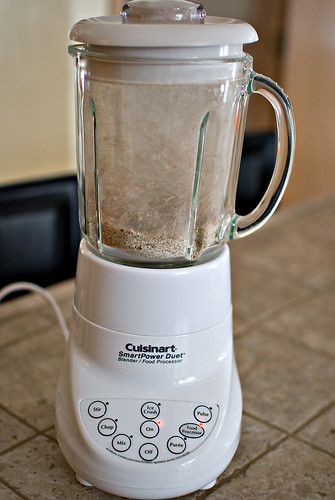
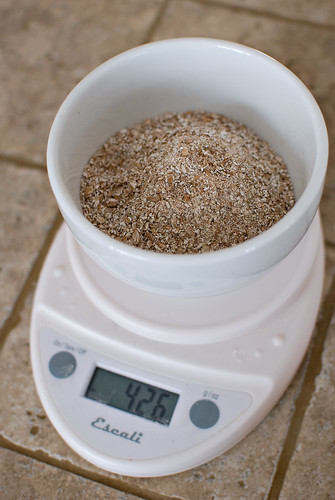
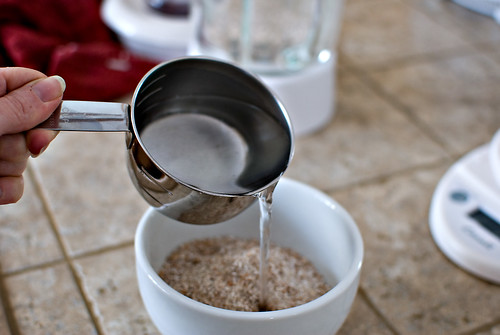
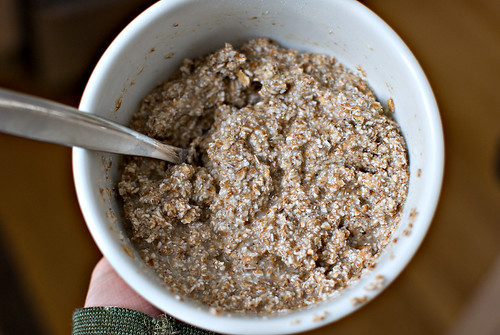
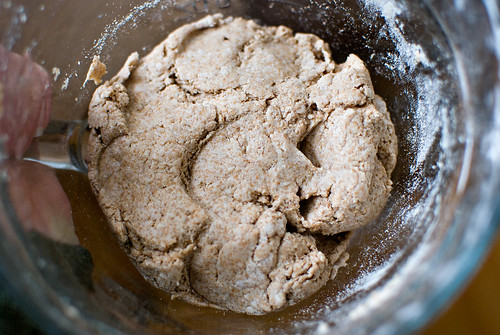
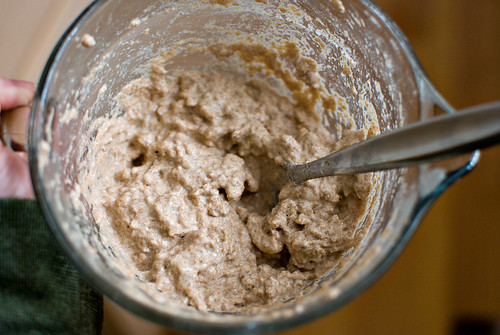

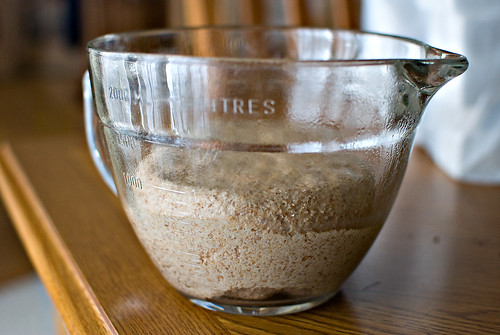

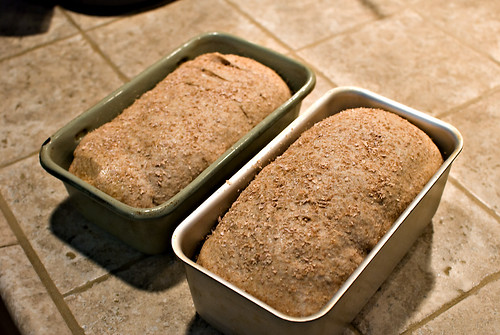

Yay! You are almost done! Loaves looks pretty good! I looked at the recipe and I agree with you on the amounts of honey. In my recipe, I use 1/3 c. honey and 1/3 c. canola oil, but it makes 3 one pound loaves, whereas PR's recipe makes 2 one pound loaves.
ReplyDeleteFrieda-
ReplyDeleteThank you! I think your recipe sounds like a winner. I'll have to give it a go-goodness knows I've used your dinner roll recipe more times than I can count. :)